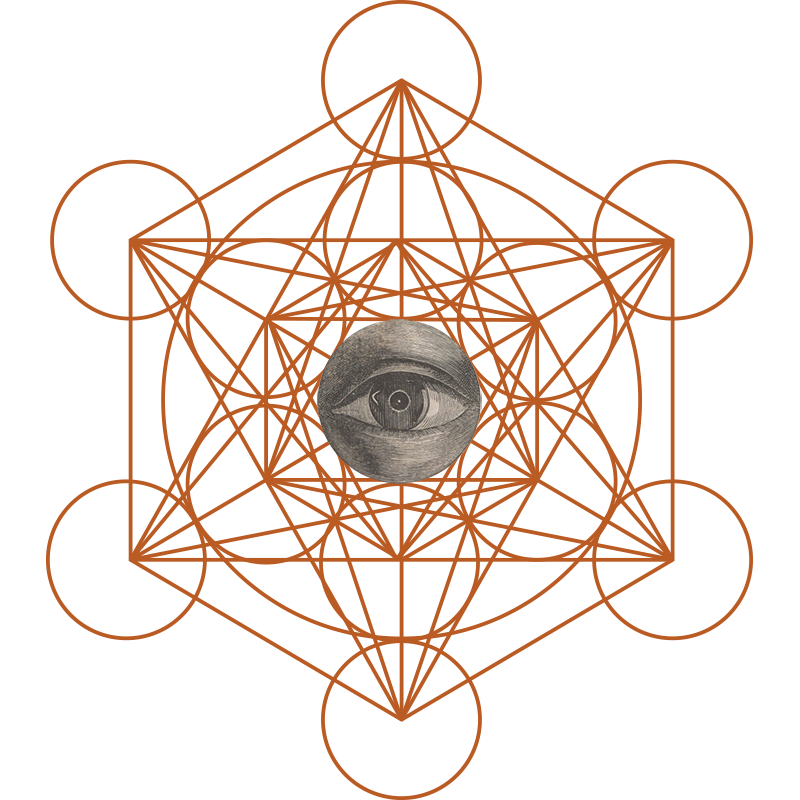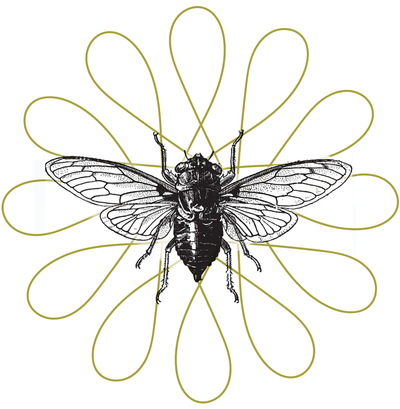
Return to the Path
Part II: The Council – Listen, sequence, choose
Previously, we reframed “returning” as a next honest step from where you stand, and we learned why the brain guesses first then updates. Today we stay with the swing itself – name the pulls, let them breathe, choose again.
Part 1 asked for direction, not reinvention – one true step at a time. Part 2 asks for company: the pulls that travel with you. We won’t exile them; we’ll listen – then choose.The Small Return
Late afternoon. The room is warm and a little dim. Tabs bloom on the screen. Your thumb drifts toward the phone – not quite hunger, not quite rest. Somewhere in between.
You catch it – a breath that lands lower than usual. Feet on the floor. Jaw softens by a millimeter. In that inch of quiet you notice there isn’t just one impulse here.
One pull wants relief – sugar, scrolling, softness.
Another wants proof – clear lines, one more task crushed.
A third wants distance – shut the door, feel nothing for a while.
Each pull feels honest from the inside. You can feel them in the body if you listen: a weight behind the eyes, a tight chest, a lifted spine. For a beat you’re just the one who notices – not arguing, not obeying.
You don’t make a speech. You make space. And in that space, the next step becomes small enough to take from here.
Name the Pulls, Let Them Breathe
You don’t have to choose a side to choose a step.
Start by letting each pull be true in its own way. Relief isn’t the enemy; it’s a nervous system asking for warmth. Proof isn’t a tyrant; it’s dignity wanting to matter. Distance isn’t apathy; it’s a threshold saying “not all at once.”
Listen in the body. Where does each live? Relief often pools in the face and chest (a forward lean toward comfort). Proof lifts the spine, narrows the eyes, tightens the jaw. Distance sinks the belly or turns the shoulders.[1] Let the sensations name themselves.
Give them a line or two.
Quick triage – which pull is leading?
Relief: How can I feel better now? → warmth/comfort (tea, stretch, dim).
Proof: What one clean thing moves the day? → one visible action (send, save, one line).
Distance: How can I lower the noise so I can choose? → reduce inputs (shade eyes, gaze far, silence pings).
Now hold all three in your attention at once – like placing stones in your palm. Nothing to fix. Just seeing clearly. Often, that seeing is enough to suggest the next honest inch.
A 30‑second map → one step
- Say the pulls out loud (or jot three words).
- Note where each shows up in the body.
- Ask: From here, what single act honors at least two of these?
Examples
- Tea + timer: make something warm (relief), set a 20‑minute timer and finish one small task (proof), no notifications until it rings (distance).
- Outside + send: step onto the balcony or doorway for three breaths (distance/relief), then press “send” on the draft that’s already 80% ready (proof).
- Close tab + move: close the loudest tab (distance), do ten slow squats or a doorway stretch (relief), write one true sentence on the doc (proof).
No ceremony, no vows. The step is small enough that your body says yes. Take it, then repeat when the swing returns.
Direction, not drama. You’re not silencing parts of you – you’re letting them be heard long enough for a wiser choice to emerge.
Sequence the pulls
Sometimes the pulls don’t just coexist – they clash. Relief wants softness now. Proof wants momentum now. Distance wants quiet now. If you try to satisfy all three at once, you stall. If you crown one, you’ll likely boomerang.
A gentler way: sequence the pulls – see it, understand it, take one step.
Why this matters. When you can sense the swing before you fix it, your returns stop feeling like discipline and start feeling like relief.
See it.
Mid‑morning. The screen hums with unopened mail. Your jaw tightens a hair. Three currents arrive:
- Relief wants a scroll, a snack, a soft landing.
- Proof wants one clean line on what matters.
- Distance wants less input – palm briefly shading the eyes or gaze resting on a far point; a few moments to thin the noise.
You feel them in places: a fog behind the eyes (relief), a lifted, narrow focus (proof), a hollowing in the belly and turned shoulders (distance). Yours may show up differently – note what’s true for you. For one breath you don’t pick a winner; you just see the map.
Inside the prediction.
What you’re feeling is the brain doing its job. Very briefly:
Body signal rises (interoception – the body’s “inside sense”).
The brain predicts what it means using past experience.
That prediction comes with a ready-made action: avoid and soothe, push and prove, or step away to reduce input.1
Two valid predictions can be active at once. You don’t have to crush one – you choose which prediction leads first, then update with a small action.
Return – two steps
(Tiny, on purpose. Use this once or twice a day when you notice the swing.)
- Name the strongest pull – and where you feel it. What’s pulling me right now? Where is it in my body? (Relief, proof, distance – or your own word.)
- Pick the next true step from here. One small, visible act that serves the day you actually want (bonus if it honors two pulls at once).
Try it now – 40 seconds
- Release a long exhale through pursed lips; feel the shoulders drop.
- Name what’s pulling you and point to where it lives in the body.
- Then, sequence the next minute accordingly:
- Ask, What is this pull trying to spare me from?
- Then, What’s one clean step from here?
- Do it. Put the phone in another room. Open the right file. Pour water. Stand up.
- Optional repeat – 20 seconds.
Evening. A hard email sits unsent. Relief reaches for the dishes first; proof wants to clear the inbox to feel competent; distance whispers, tomorrow. You sequence: give distance three slow breaths at the window, then give proof one honest line and press save, and promise relief a cup of tea once the line is written. Same pulls – different order.
Evening. A hard email sits unsent. Relief reaches for the dishes first; proof wants to clear the inbox to feel competent; distance whispers, tomorrow. You sequence: give distance three slow breaths at the window, then give proof one honest line and press save, and promise relief a cup of tea once the line is written. Same pulls – different order.
Brief pulls live in your interoception – the body’s “inside sense.” Under load, it guesses fast: tight chest → avoidance; low energy → sugar. Naming the pull creates a tiny prediction‑error gap the Self can step into; one clean action updates the guess for next time. (See: prediction, interoception, body‑budget.)
What you’ll notice after a week of the map + two-step returns
- The interval between urge and act gets wider.
- Returns feel less moral, more mechanical – like aligning a compass.
- The “one step” often creates its own momentum; the second and third steps arrive without forcing.
If you want a gentle practice
Pendulum journal 7 days – 2 lines per day
- Pull I felt: _______________
- Next true step I took: _______________
- That's it. No judging, just cataloguing the sequence.
The Two‑Minute Council (a foundational IFS practice)
Sometimes the tug‑of‑war won’t settle on its own. And sometimes the most honest way back to the path is not another burst of will – it’s a brief conversation with the ones doing the pulling.
You are not the chorus. You are the one who can listen. In IFS terms: parts are inner agents that learned jobs to keep you safe; Self is the clear, warm awareness that can lead. There are no bad parts – only strategies that can be updated. This practice is how you begin to build that trust.
We’ll keep two levels: a tiny, on‑the‑fly council you can use today, and a weekly, deeper sit‑down to understand your cast.
Note on how parts show up. Some people “hear” parts as thoughts/voices; others feel them as shifts in posture, breath, heat, or images. Neurotype, culture, and stress change the channel. Either way is valid – name what’s true for you.
Pocket Council – 2 minutes, anywhere
Set the room (20–30 sec). Feet on the floor. Soften the jaw. Exhale slowly once or twice, through pursed lips. Let the eyes rest on one point. Ask quietly: Am I curious right now? Even a little? If yes, Self is here enough to lead. If not, thank the strongest part, the one who resists: I feel you – and ask for a small bubble of space: Give me two minutes; you’ll be heard.
Invite & listen (60–90 sec).
- Who’s up right now? (Soother, Proof‑seeker, Protector, Judge – or your own label.)
- What do you want for me? What are you afraid would happen if you didn’t do your job?
- Where do you live in the body? How old do you think we are? Keep answers short. One line is enough. Jot a word if it helps.
Negotiate one next step (30 sec). Choose a small, visible act that serves the day you actually want – bonus if it honors two parts at once. Time‑box it and offer after‑care.
I hear you. We’ll do 15 minutes on the draft (Proof), then tea and three quiet breaths (Soother). I’ll check back after the timer.
If a block shows up:
- Judge arrives – thank it for standards; ask it to stand beside you quietly while you take the first step. Promise to ask its view after.
- Fog / Numb arrives – that’s a protector too. Reduce inputs for one minute (shade eyes, silence pings), keep the step tiny, then proceed.
- Big hurt (an exile) peeks in – hand on heart; I see you. Promise real time later today. Right now you’ll take one gentle step that reduces overwhelm.
Borrowable language – say it as you: Soother, thank you for trying to soften the day. Proof‑seeker, I see your dignity. Give me one line, not a crusade. Protector, you can stand with me – we’re safe enough for this small step.
Weekly Council – 15–20 minutes to know your cast
This is where trust compounds. Once a week, sit down with your inner team. You’re not fixing – you’re learning each role’s job description so you can lead with respect.
1) Land (2 min). Posture that breathes. Exhale slow. Let attention spread wide. If a part is blended (you feel fully “inside” it), acknowledge and ask for a little distance so you can listen.
2) Meet one part at a time (10–12 min total). Invite whoever feels strongest this week. Ask:
- What is your job for me?
- What are you protecting me from?
- What happens if you stop?
- Where do you live in my body? How old do you feel when you take over?
- What would help you trust me (Self) a little more this week? Reflect back what you hear. No arguing, no exile. If multiple parts crowd in, let them know you’ll get to each – then choose one for today.
3) Make a micro‑agreement (2–3 min). Co‑design one small experiment that serves both the part’s aim and the life you want. Write it down. Time‑box it. Promise a check‑in.
4) Close with gratitude (1 min). Thank each part by name. Remind them: You will not be exiled. I’ll keep listening, and I’ll lead.
If you’re unsure whether Self is leading: imagine a path in front of you. Take a few steps down it in your mind. Look back: are the parts still pressed against you, or can they walk with you at arm’s length? If they can’t give space yet, say so out loud – and keep the agreement even smaller today.
Why this works
Listening reduces protective over‑activation; naming shifts the brain’s prediction about what the body’s signals mean; a single respectful step updates that prediction. Over time, parts learn that Self keeps promises and no one gets banished – and the swing calms.
When to use / when not to use
Use Pocket Council whenever two pulls keep swapping control (snack vs send, scroll vs start, withdraw vs speak). Use Weekly Council to understand strong, recurring roles that chronically block changes (gym, food, sleep, intimacy, creative work).
If you’re in acute distress or trauma activation – racing heart, dissociation, panic – prioritize basic regulation first (step away from triggers, ground, call support). Council can wait. You’re not behind.
Takeaway. No bad parts. Real leadership sounds like respect, limits, and follow‑through. Two minutes today builds the trust you’ll need tomorrow.
Three snags, gentle fixes
Even when the map is clear, old grooves pull harder than we expect. The point isn’t to overpower them – it’s to recognize when a useful pull has slid into an old loop, then offer a kinder alternative.
We’ll keep this compact: what it feels like, what it is protecting, one small way to pivot.
1) When Relief slides into numbing
Feels like. Heavy eyelids, soft belly, a slow melt toward sofa or screen. Minutes get spongy.
What it is protecting. Overwhelm and depletion. It tries to spare you from too-muchness by dulling signal.
Pivot – comfort with contact. Keep the warmth, keep the softness – add a thread of presence.
- Make something warm and hold it with both hands for three breaths. Feel the heat in your palms.
- Name one sensation out loud – weight in thighs, warmth in hands, jaw loosening.
- Set a 10–15 minute rest timer. When it rings, choose one tiny re-entry – open the right file, send one line, stand and stretch.
Language that helps. Thank you for softening the edges. We will rest with the lights on inside.
Red flag. If you postpone the timer or “wake up” an hour later, you’re back in numbing. Reset with one standing breath and the smallest visible act.
2) When Proof inflates into perfectionism
Feels like. Jaw set, tunnel vision, new micro‑plan forming. Starting gets delayed while you refine the plan.
What it is protecting. Shame and helplessness. If the bar is flawless, you never have to meet “good enough.”
Pivot – define enough, then ship.
- Before you start, write a one‑line definition of done – send draft to X, log 20 minutes, write three true sentences.
- Set a 20–25 minute block. Begin immediately. When the block ends, ship the state you promised.
Language that helps. One clear line is enough for now. We can iterate later.
Red flag. If you catch yourself improving the scaffold instead of the thing, you’re in perfectionism. Return to the one‑line “done.”
3) When Distance becomes avoidance
Feels like. A hollowing under the ribs, shoulders turning away, eyes seeking the middle distance. The wish is to vanish for a while.
What it is protecting. Overstimulation and risk. It tries to lower the noise by disappearing.
Pivot – reduce input, don’t disappear.
- Shade the eyes with a palm or let your gaze rest on the farthest point in the room. One long exhale.
- Silence pings, close the loudest tab, put the phone in another room for 10 minutes.
- Re‑enter with one touchpoint – name the first action out loud and do only that.
Language that helps. We will turn the volume down, not the day off.
Red flag. If “tomorrow” has repeated more than twice, name it. Ask Distance what it is protecting you from, then choose a 60‑second re‑entry.
Two evening questions – keep it human
- What pulled most today?
- Where did I show leadership, even briefly?
Two lines in a notebook is enough. The aim is not a perfect score – it is a record of respect and tiny course‑corrections.
[ASIDE] Why this helps. Relief, Proof and Distance are prediction strategies for managing your body‑budget. Naming the shift reduces ambiguity; tiny, visible actions give the brain better data for next time – and trust builds. [/ASIDE]
Takeaway. You do not need a new self to return – you need a kinder sequence. See the slide, pivot gently, continue.
BEFORE WE PAUSE
Tonight my own return was ordinary: I shaded my eyes for three breaths – Distance – typed one honest sentence on the draft – Proof – then made a cup of torrija tea and just sat for a minute – Relief. Nothing heroic. Enough.
Tried a sequence today? Noticed a line from your Council? I’d love to hear. Join the conversation on Threads or Instagram, email meor pass this to one person who needs gentleness more than grit.
with clarity and care,
Gustav
- Note on bodies Interoception differs by person and context. Treat these as starting points – your map is the authority.↩


